armed forces
Top Brass Is On The Run Ahead Of Trump’s Return
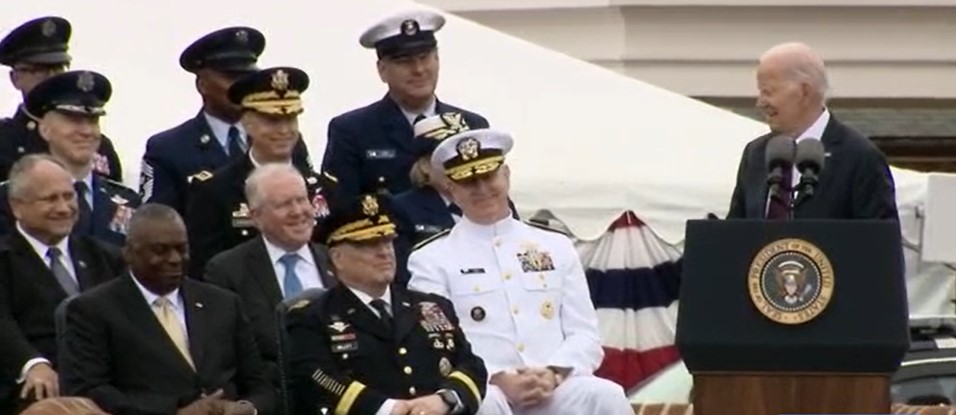

From the Daily Caller News Foundation
By Morgan Murphy
With less than a month to go before President-elect Donald Trump takes office, the top brass are already running for cover. This week the Army’s chief of staff, Gen. Randy George, pledged to cut approximately a dozen general officers from the U.S. Army.
It is a start.
But given the Army is authorized 219 general officers, cutting just 12 is using a scalpel when a machete is in order. At present, the ratio of officers to enlisted personnel stands at an all-time high. During World War II, we had one general for every 6,000 troops. Today, we have one for every 1,600.
Right now, the United States has 1.3 million active-duty service members according to the Defense Manpower Data Center. Of those, 885 are flag officers (fun fact: you get your own flag when you make general or admiral, hence the term “flag officer” and “flagship”). In the reserve world, the ratio is even worse. There are 925 general and flag officers and a total reserve force of just 760,499 personnel. That is a flag for every 674 enlisted troops.
The hallways at the Pentagon are filled with a constellation of stars and the legions of staffers who support them. I’ve worked in both the Office of the Secretary of Defense and the Joint Chiefs of Staff. Starting around 2011, the Joint Staff began to surge in scope and power. Though the chairman of the Joint Chiefs is not in the chain of command and simply serves as an advisor to the president, there are a staggering 4,409 people working for the Joint Staff, including 1,400 civilians with an average salary of $196,800 (yes, you read that correctly). The Joint Staff budget for 2025 is estimated by the Department of Defense’s comptroller to be $1.3 billion.
In contrast, the Secretary of Defense — the civilian in charge of running our nation’s military — has a staff of 2,646 civilians and uniformed personnel. The disparity between the two staffs threatens the longstanding American principle of civilian control of the military.
Just look at what happens when civilians in the White House or the Senate dare question the ranks of America’s general class. “Politicizing the military!” critics cry, as if the Commander-in-Chief has no right to question the judgement of generals who botched the withdrawal from Afghanistan, bought into the woke ideology of diversity, equity and inclusion (DEI) or oversaw over-budget and behind-schedule weapons systems. Introducing accountability to the general class is not politicizing our nation’s military — it is called leadership.
What most Americans don’t understand is that our top brass is already very political. On any given day in our nation’s Capitol, a casual visitor is likely to run into multiple generals and admirals visiting our elected representatives and their staff. Ostensibly, these “briefs” are about various strategic threats and weapons systems — but everyone on the Hill knows our military leaders are also jockeying for their next assignment or promotion. It’s classic politics
The country witnessed this firsthand with now-retired Gen. Mark Milley. Most Americans were put off by what they saw. Milley brazenly played the Washington spin game, bragging in a Senate Armed Services hearing that he had interviewed with Bob Woodward and a host of other Washington, D.C. reporters.
Woodward later admitted in an interview with CNN that he was flabbergasted by Milley, recalling the chairman hadn’t just said “[Trump] is a problem or we can’t trust him,” but took it to the point of saying, “he is a danger to the country. He is the most dangerous person I know.” Woodward said that Milley’s attitude felt like an assignment editor ordering him, “Do something about this.”
Think on that a moment — an active-duty four star general spoke on the record, disparaging the Commander-in-Chief. Not only did it show rank insubordination and a breach of Uniform Code of Military Justice Article 88, but Milley’s actions represented a grave threat against the Constitution and civilian oversight of the military.
How will it play out now that Trump has returned? Old political hands know that what goes around comes around. Milley’s ham-handed political meddling may very well pave the way for a massive reorganization of flag officers similar to Gen. George C. Marshall’s “plucking board” of 1940. Marshall forced 500 colonels into retirement saying, “You give a good leader very little and he will succeed; you give mediocrity a great deal and they will fail.”
Marshall’s efforts to reorient the War Department to a meritocracy proved prescient when the United States entered World War II less than two years later.
Perhaps it’s time for another plucking board to remind the military brass that it is their civilian bosses who sit at the top of the U.S. chain of command.
Morgan Murphy is military thought leader, former press secretary to the Secretary of Defense and national security advisor in the U.S. Senate.
armed forces
Yet another struggling soldier says Veteran Affairs Canada offered him euthanasia
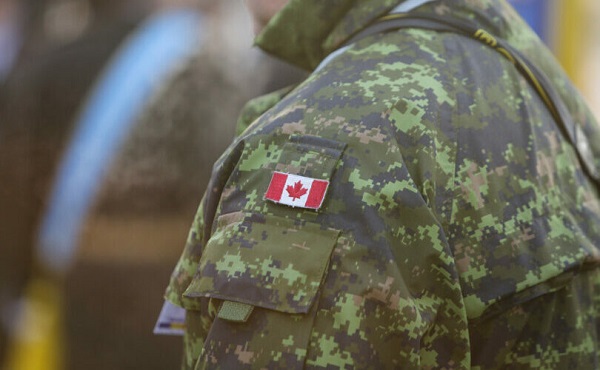
From LifeSiteNews
‘It made me wonder, were they really there to help us, or slowly groom us to say ‘here’s a solution, just kill yourself.’
Yet another Canadian combat veteran has come forward to reveal that when he sought help, he was instead offered euthanasia.
David Baltzer, who served two tours in Afghanistan with the Princess Patricia’s Canadian Light Infantry, revealed to the Toronto Sun that he was offered euthanasia on December 23, 2019—making him, as the Sun noted, “among the first Canadian soldiers offered therapeutic suicide by the federal government.”
Baltzer had been having a disagreement with his existing caseworker, when assisted suicide was brought up in in call with a different agent from Veteran Affairs Canada.
“It made me wonder, were they really there to help us, or slowly groom us to say ‘here’s a solution, just kill yourself,” Baltzer told the Sun.“I was in my lowest down point, it was just before Christmas. He says to me, ‘I would like to make a suggestion for you. Keep an open mind, think about it, you’ve tried all this and nothing seems to be working, but have you thought about medical-assisted suicide?’”
Baltzer was stunned. “It just seems to me that they just want us to be like ‘f–k this, I give up, this sucks, I’d rather just take my own life,’” he said. “That’s how I honestly felt.”
Baltzer, who is from St. Catharines, Ontario, joined up at age 17, and moved to Manitoba to join the Princess Patricia’s Canadian Light Infantry, one of Canada’s elite units. He headed to Afghanistan in 2006. The Sun noted that he “was among Canada’s first troops deployed to Afghanistan as part Operation Athena, where he served two tours and saw plenty of combat.”
“We went out on long-range patrols trying to find the Taliban, and that’s exactly what we did,” Baltzer said. “The best way I can describe it, it was like Black Hawk Down — all of the sudden the s–t hit the fan and I was like ‘wow, we’re fighting, who would have thought? Canada hasn’t fought like this since the Korean War.”
After returning from Afghanistan, Baltzer says he was offered counselling by Veteran Affairs Canada, but it “was of little help,” and he began to self-medicate for his trauma through substance abuse (he noted that he is, thankfully, doing well today). Baltzer’s story is part of a growing scandal. As the Sun reported:
A key figure shedding light on the VAC MAID scandal was CAF veteran Mark Meincke, whose trauma-recovery podcast Operation Tango Romeo broke the story. ‘Veterans, especially combat veterans, usually don’t reach out for help until like a year longer than they should’ve,’ Meincke said, telling the Sun he waited over two decades before seeking help.
‘We’re desperate by the time we put our hands up for help. Offering MAID is like throwing a cinderblock instead of a life preserver.’ Meincke said Baltzer’s story shoots down VAC’s assertions blaming one caseworker for offering MAID to veterans, and suggests the problem is far more serious than some rogue public servant.
‘It had to have been policy. because it’s just too many people in too many provinces,” Meincke told the Sun. “Every province has service agents from that province.’
Veterans Affairs Canada claimed in 2022 that between four and 20 veterans had been offered assisted suicide; Meincke “personally knows of five, and said the actual number’s likely close to 20.” In a previous investigation, VAC claimed that only one caseworker was responsible—at least for the four confirmed cases—and that the person “was lo longer employed with VAC.” Baltzer says VAC should have military vets as caseworkers, rather than civilians who can’t understand what vets have been through.
To date, no federal party leader has referenced Canada’s ongoing euthanasia scandals during the 2025 election campaign.
armed forces
Canada’s Military is Collapsing. Without Urgent Action, We Won’t Be Able To Defend Ourselves

From the Frontier Centre for Public Policy
By David Leis
Decades of underfunding and political neglect have left our military weak and unprepared
What Lt.-Gen (retired) Michel Maisonneuve (ret.) told me about Canada’s military was nothing short of alarming. He didn’t mince words—our armed forces are in dire straits. If we don’t act now, Canada will not only be unable to defend itself, but it will cease to be taken seriously by our allies, many of whom are already losing patience with our military decline.
Maisonneuve has seen firsthand what a functioning military looks like. He has served at the highest levels, working alongside our allies in NATO, and he knows exactly what Canada is failing to do. “We are no longer at the table when major defence decisions are made,” he told me. “The Americans don’t ask us what we think anymore because they know we can’t contribute.” That is a stunning indictment of where we now stand—a country that was once respected for its ability to punch above its weight militarily has been reduced to an afterthought.
The problem, as Maisonneuve laid out, is both simple and staggering: Canada doesn’t take its defence seriously anymore. The government has allowed our forces to wither. The Air Force is still buying CF-18s from the 1980s because the long-delayed F-35 procurement is years behind schedule. The Navy, once a competent maritime force, is barely functional, with no operational submarines and a fleet that is nowhere near what is needed to patrol our vast coastlines.
Meanwhile, the Army is struggling to recruit and retain soldiers, leaving its numbers dangerously low. “We have an Army in name only,” Maisonneuve said. “If we were called upon tomorrow to deploy a fully operational combat force, we couldn’t do it.”
Even more shocking is the state of readiness of our troops. A recent report found that 75 per cent of Canadian military personnel are overweight. Maisonneuve didn’t sugarcoat it:
“It’s unacceptable. We are supposed to be training warriors, not watching fitness standards collapse.” When the people entrusted with defending our country are struggling with basic physical fitness, it speaks to something much deeper—an institutional rot that has infected the entire system. Our allies have noticed. Canada was locked out of AUKUS, the military alliance between the U.S., the U.K. and Australia. “It wasn’t an oversight,” Maisonneuve explained. “It was a deliberate snub. The Americans don’t see us as a serious defence partner anymore.” That snub should have been a wake-up call. Instead, our government shrugged it off.
Meanwhile, Washington is openly questioning Canada’s value in NATO. The Americans see the numbers—Canada refuses to meet even the minimum defence spending requirement of two per cent of GDP. Instead of fulfilling our obligations, we offer up empty promises and expect others to pick up the slack.
Maisonneuve is blunt about what needs to be done. “First, we need to fully fund the military—and that means not just hitting the NATO target but exceeding it. Our allies spend real money on their defence because they understand that security is not optional.” He suggests Canada should aim for at least 2.5 per cent of GDP, not just as a show of commitment but as a necessity to rebuild our capabilities. Beyond money, Maisonneuve argues that military culture must be restored.
“We’ve allowed ideology to creep into the ranks. The military’s primary function is to defend the nation, not to serve as a social experiment,” he said. “We need to get back to training warriors, not worrying about whether we’re ticking the right diversity boxes.” He believes a return to a warrior ethos is essential— without it, the military will remain directionless.
Procurement is another disaster that Maisonneuve insists must be fixed immediately. “We’ve spent years dithering on replacing equipment, and every delay puts us further behind,” he said. The F-35 deal should have been signed years ago, but political hesitation means we won’t see a full fleet for years. The Navy urgently needs new submarines and icebreakers, especially to secure the Arctic, where other global powers, particularly Russia, are ramping up their presence.
The biggest issue, though, is manpower. “We need to rebuild the forces, period,” Maisonneuve told me. “That means recruiting, training, and retaining soldiers, and we are failing at all three.” He even suggested that Canada should consider implementing a national service requirement, a move that would not only increase troop numbers but also instill a sense of duty and responsibility in younger generations. “We used to be a country that took security seriously,” he said. “What happened?”
That’s the question, isn’t it? What happened to Canada? How did we go from being a country that contributed meaningfully to global security to one that can’t even defend itself? The reality is that successive governments have let this happen—first by neglecting funding, then by letting bureaucracy suffocate procurement, and finally by allowing the core purpose of the military to be diluted.
Maisonneuve is clear: Canada must act now, or it will cease to be taken seriously.
David Leis is President and CEO of the Frontier Centre for Public Policy and host of the Leaders on the Frontier podcast
-

 2025 Federal Election23 hours ago
2025 Federal Election23 hours agoMark Carney: Our Number-One Alberta Separatist
-

 2025 Federal Election1 day ago
2025 Federal Election1 day agoNine Dead After SUV Plows Into Vancouver Festival Crowd, Raising Election-Eve Concerns Over Public Safety
-
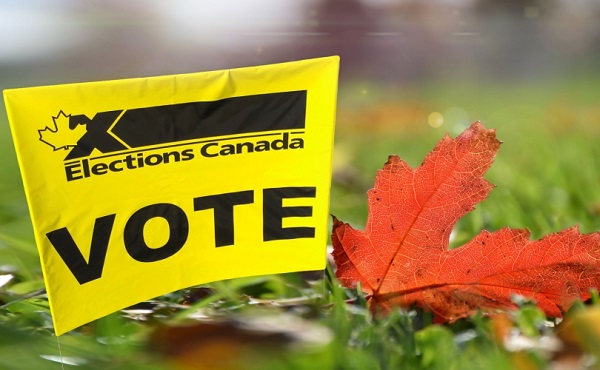
 Opinion2 days ago
Opinion2 days agoCanadians Must Turn Out in Historic Numbers—Following Taiwan’s Example to Defeat PRC Election Interference
-

 International1 day ago
International1 day agoJeffrey Epstein accuser Virginia Giuffre reportedly dies by suicide
-

 International2 days ago
International2 days agoHistory in the making? Trump, Zelensky hold meeting about Ukraine war in Vatican ahead of Francis’ funeral
-
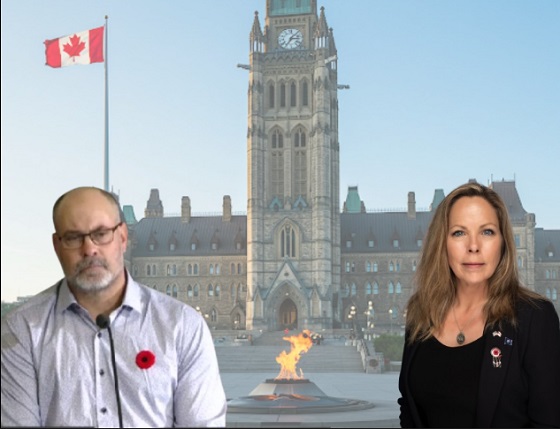
 C2C Journal2 days ago
C2C Journal2 days ago“Freedom of Expression Should Win Every Time”: In Conversation with Freedom Convoy Trial Lawyer Lawrence Greenspon
-

 2025 Federal Election1 day ago
2025 Federal Election1 day agoColumnist warns Carney Liberals will consider a home equity tax on primary residences
-
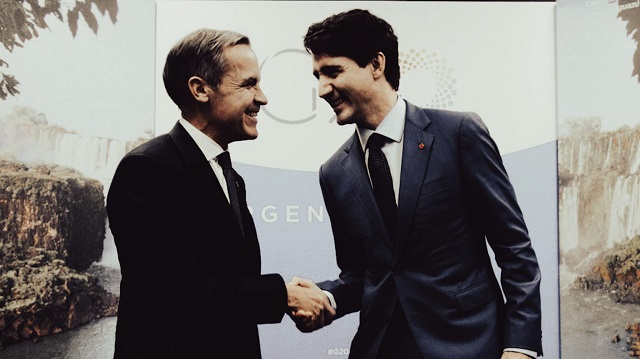
 2025 Federal Election15 hours ago
2025 Federal Election15 hours agoCanada is squandering the greatest oil opportunity on Earth

